Nature Notebook: Imbolc // Snowdrop Facts
Look for signs of spring and fill a page in your journal
This week your Noticing Nature prompt is to look for signs of spring. It really is on the way!
February 1st-2nd marks Imbolc (which, thanks to
, I just learnt is pronounced ‘imulk’). Imbolc is the midpoint between winter solstice and spring equinox and it’s a good time to sow literal and metaphorical seeds, welcome some light into your life and reflect on the season past.Why not take the opportunity to write or draw in your nature journal? I’ve popped some prompts below to help you…
What do you know about imbolc? Research its traditions or reflect on what it means to you and how you can celebrate/acknowledge it.
What seeds do you want to plant right now, both literally and metaphorically?
What do you want to shine a light on at the moment?
What have you learnt from the winter months? Is there anything you want to bring with you into spring or anything you want to leave behind in the darkness?
Snowdrop Facts
Now is the perfect time to go out looking for snowdrops, one of the most-used symbols for imbolc, and one of the first signs of spring in the UK. Here are some snowdrop facts I discovered this week, while researching for my journal:
Snowdrops are not native to the UK. They were first introduced in gardens during the 16th century, but were not recorded in the wild until the 18th century.
Snowdrops don’t have any petals! What most of us would describe as petals are actually ‘tepals’ - snowdrops have three outer tepals and three smaller inner tepals.
In France, the common name for a snowdrop is ‘perce-neige’ which translates to ‘snow piercer’. The leaves of snowdrops are especially hardened for breaking through icy ground and their sap contains a sort of antifreeze which prevents ice crystals from forming.
Snowdrops are now seen as a sign of hope (probably because they are a sure sign spring is on the way), but it was once thought to be bad luck to bring a snowdrop into the home and seeing a single snowdrop was a sign of impending death!
Snowdrops contain an alkaloid called Galantamine, which is used to treat Alzheimer’s.
Snowdrops tend to spread through bulb division, but they can be pollinated. Ants also help them spread. Snowdrop seeds, which develop in pods on the soil surface after the snowdrops have flowered, contain an appendage called an elastiome, which attracts ants. The ants spread these seeds by taking them back to their nest to feed the protein and oil-rich elastiome to their larvae.
If the temperature rises to about 10°C, snowdrops will open their tepals (petals) upwards and outwards to make it easier for insects to access their pollen.
Snowdrops are a good indicator of our changing climate. Thanks to scientists at Kew, we know for sure that snowdrops are emerging increasingly early as time goes on. In the mid 20th century you would be unlikely to see a snowdrop until February, but now they are a common sight in January, or even December during milder winters.
Gilanthus nivalis, the Latin name for the common snowdrop, comes from ‘gala’ meaning milk and ‘anthos’ meaning flower. The species name, ‘nivalis’, means ‘of the snow’.
Sources and Further Reading
Join me on a walk this Sunday
If you’re in London (or close by), you can join me and my fellow Wild South London trustees on a Wild Walk this Sunday at Beckenham Place Park. We’ll be celebrating imbolc and looking for signs of spring. Free tickets and more information can be found on eventbrite.
Call out for contributors
Do you have something you’d love to share about your own relationship with nature? I’m currently looking for people to contribute to Nature Notice Board and I’d love to hear from you. Perhaps you have a story to share about something you’ve noticed, maybe you’d like to share some facts you’ve just learnt or some prompts to help others notice something new. Reply to this email and let me know!
P.S. I’ll be picking a winner of the Foraging in Spring book next week, so keep an eye on your emails…
You might also like…
Nature Notebook: Winter Solstice
Today marks the Winter Solstice, the day the sun is at its lowest in the sky (in the Northern Hemisphere). Despite the fact it’s the shortest day of the year, I’d like to encourage you to spend some time with your journal today...





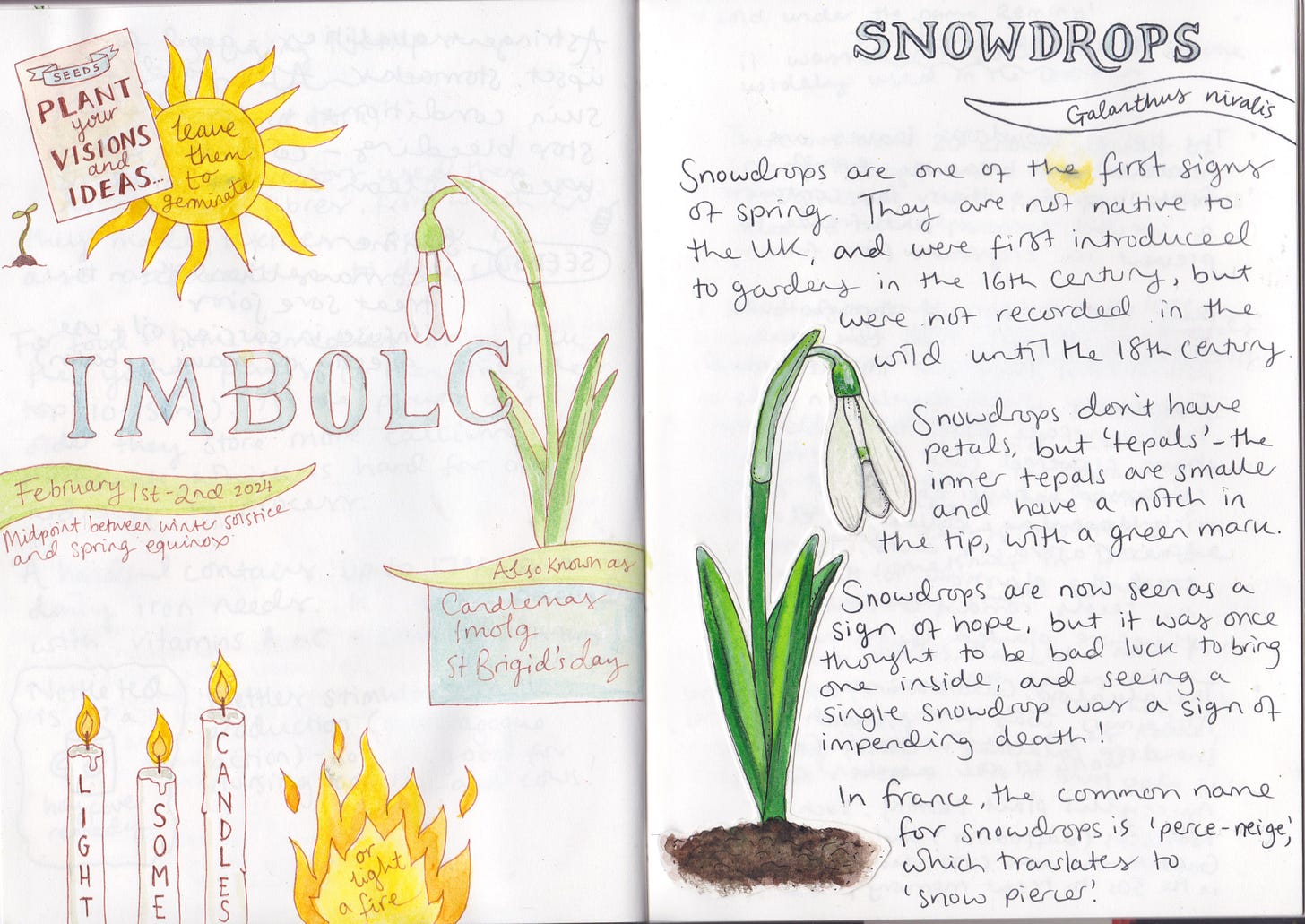
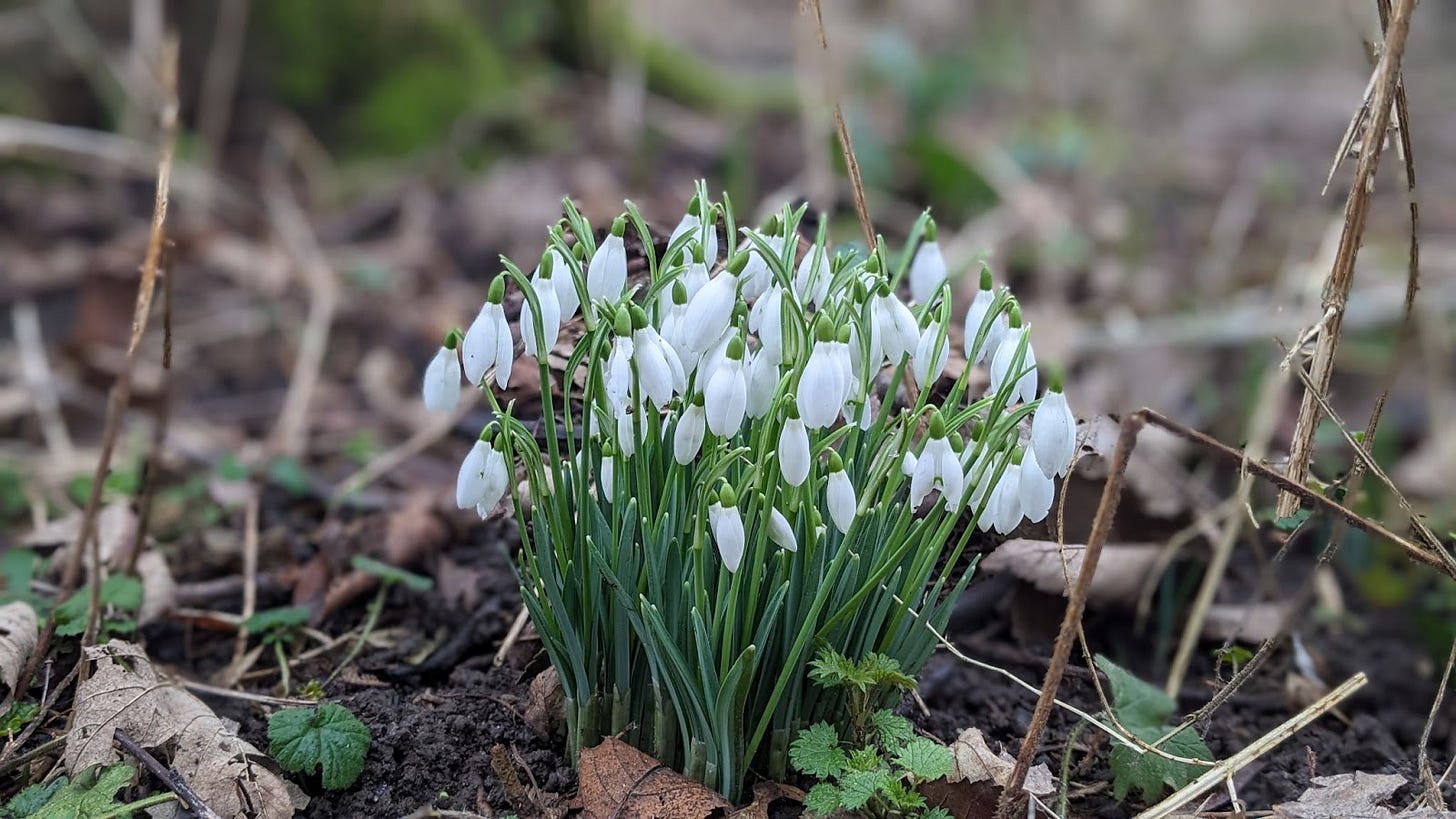
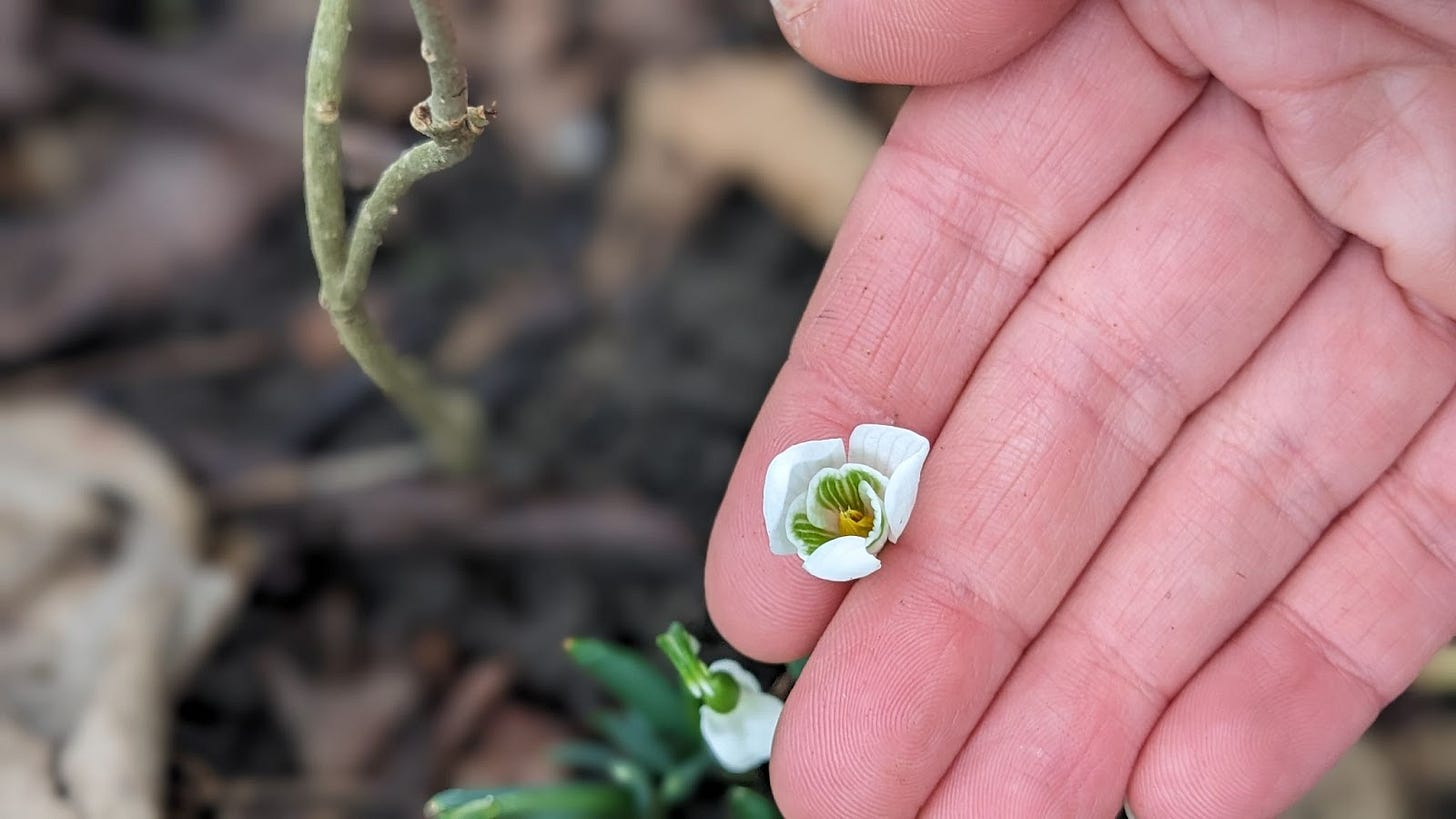
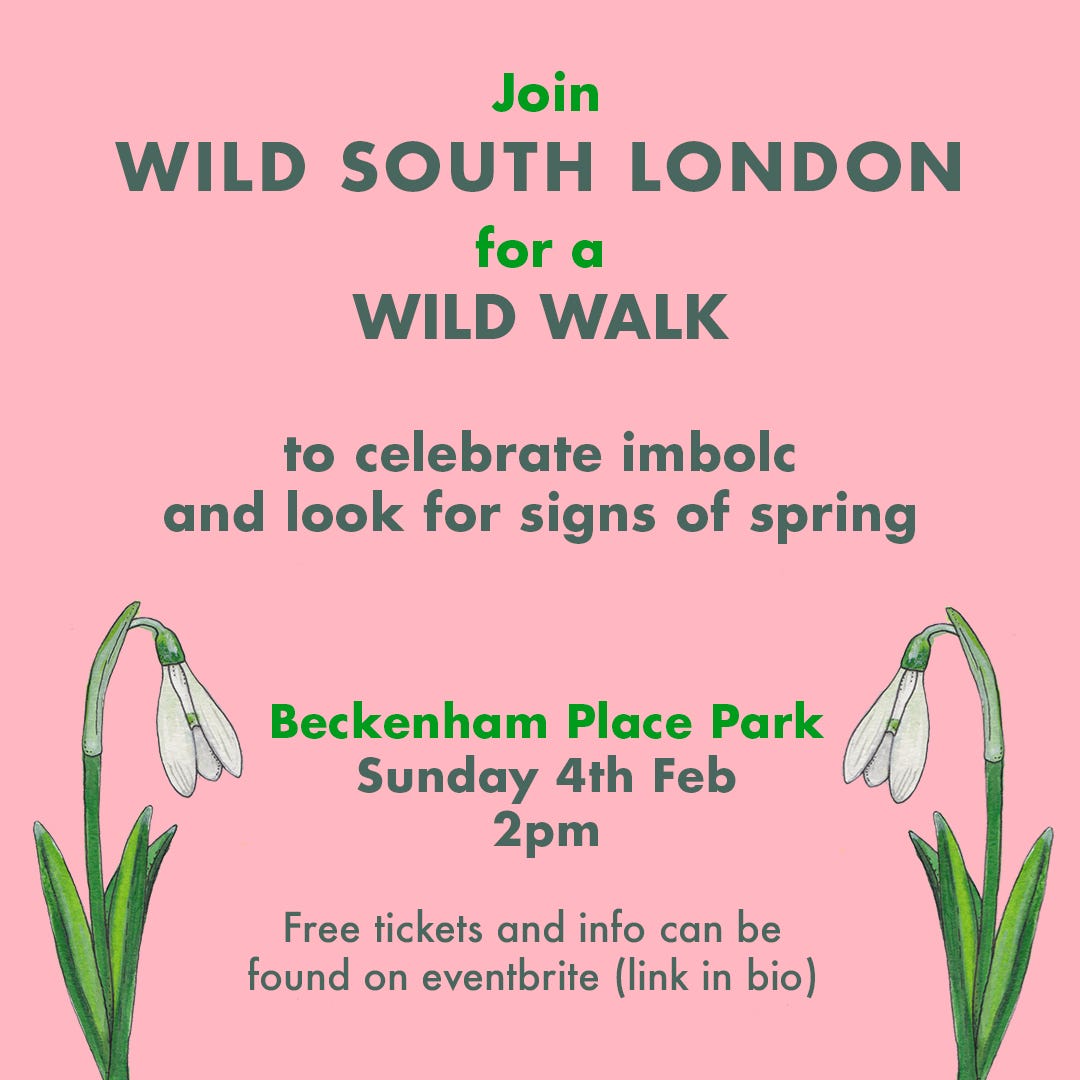
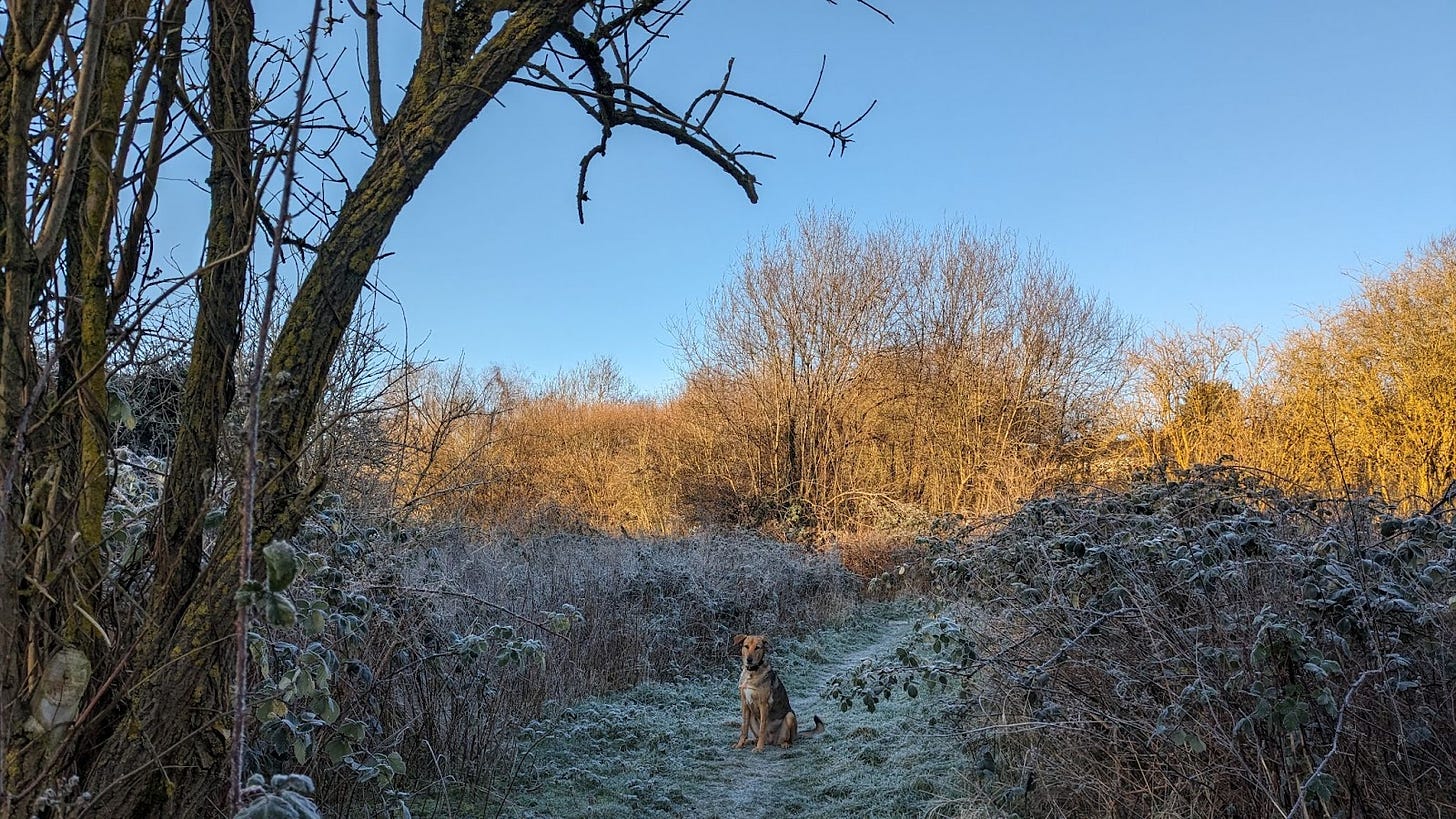
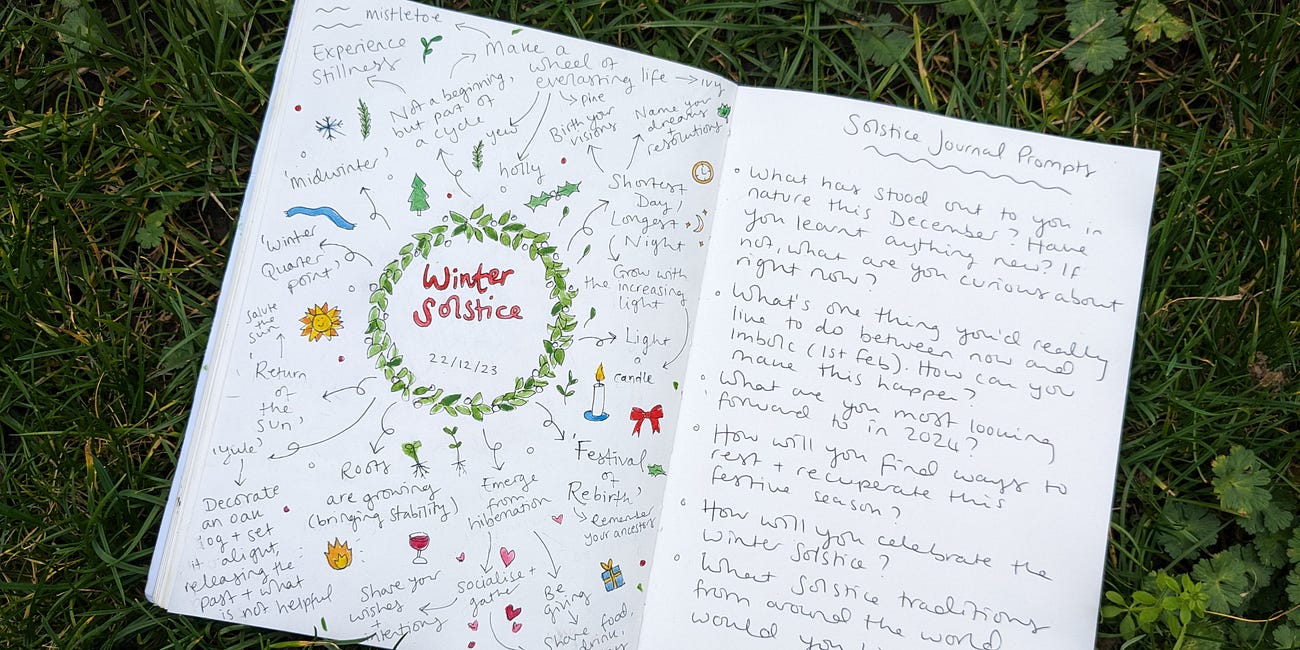
Loved reading all those facts about snowdrops! Fascinating! And your journal page is lovely ☺
What a lovely post covering Snowdrops, and I wish I could join you for that walk. Enjoy the first signs of Spring!!